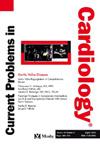高血压和主动脉血管疾病患者中枢性血压和肱动脉血压之间的关系:对临床实践的影响:分析和回顾:CBP和bBP之间的关系
IF 3
3区 医学
Q2 CARDIAC & CARDIOVASCULAR SYSTEMS
引用次数: 0
摘要
中心血流动力学指标的重要性,如中心血压(CBP),它直接测量心肌对大动脉施加的压力,与肱血压(bBP)相比,可以更直接地评估心血管负荷,肱血压(bBP)测量外周动脉壁上的压力。本综述整合了评估CBP与主动脉血管疾病关键标志物之间相关性的研究结果。胸主动脉瘤(TAA)的生长是主动脉血管评估的重要组成部分。与bBP相比,CBP与动脉僵硬度(AS)、TAA生长和心血管疾病的相关性更精确,可以更可靠地预测主动脉血管疾病、心血管不良事件(CVE)和器官损伤。与bBP相比,将CBP纳入常规临床实践可以增强主动脉血管评估和治疗策略,特别是通过对主动脉波动力学的更深入了解,这可以从根本上改变主动脉血管的诊断和治疗。建议将CBP纳入主动脉血管和心血管风险管理。需要进一步的研究来证实这些方面,并探索CBP在临床环境中的实际意义。本文章由计算机程序翻译,如有差异,请以英文原文为准。
Associations between central and brachial blood pressure in patients with hypertension and aortovascular disease: Implications for clinical practice: An analysis and review
The importance of central hemodynamic metrics such as Central blood pressure (CBP), which directly measure the pressure exerted by the cardiac muscle on the major arteries, offering a more direct assessment of cardiovascular workload compared to brachial blood pressure (bBP), which measures pressure against the walls of peripheral arteries. This review consolidates findings that evaluate the correlation between CBP and key markers of aortovascular disease. The growth of thoracic aortic aneurysm (TAA) is a significant component of aortovascular assessment. CBP correlates more precisely with arterial stiffness (AS), TAA growth, and cardiovascular diseases, providing a more reliable forecast of aortovascular diseases, adverse cardiovascular events (CVE), and organ damage than bBP. Integrating CBP into routine clinical practice could enhance aortovascular assessments and therapeutic strategies compared to bBP, especially by gaining a deeper understanding of aortic wave dynamics, which could fundamentally change aortovascular diagnostics and treatment. It is recommended to incorporate CBP into aortovascular and cardiovascular risk management. Further research is needed to confirm these aspects and to explore the practical implications of CBP in clinical settings.
求助全文
通过发布文献求助,成功后即可免费获取论文全文。
去求助
来源期刊

Current Problems in Cardiology
医学-心血管系统
CiteScore
4.80
自引率
2.40%
发文量
392
审稿时长
6 days
期刊介绍:
Under the editorial leadership of noted cardiologist Dr. Hector O. Ventura, Current Problems in Cardiology provides focused, comprehensive coverage of important clinical topics in cardiology. Each monthly issues, addresses a selected clinical problem or condition, including pathophysiology, invasive and noninvasive diagnosis, drug therapy, surgical management, and rehabilitation; or explores the clinical applications of a diagnostic modality or a particular category of drugs. Critical commentary from the distinguished editorial board accompanies each monograph, providing readers with additional insights. An extensive bibliography in each issue saves hours of library research.
 求助内容:
求助内容: 应助结果提醒方式:
应助结果提醒方式:


